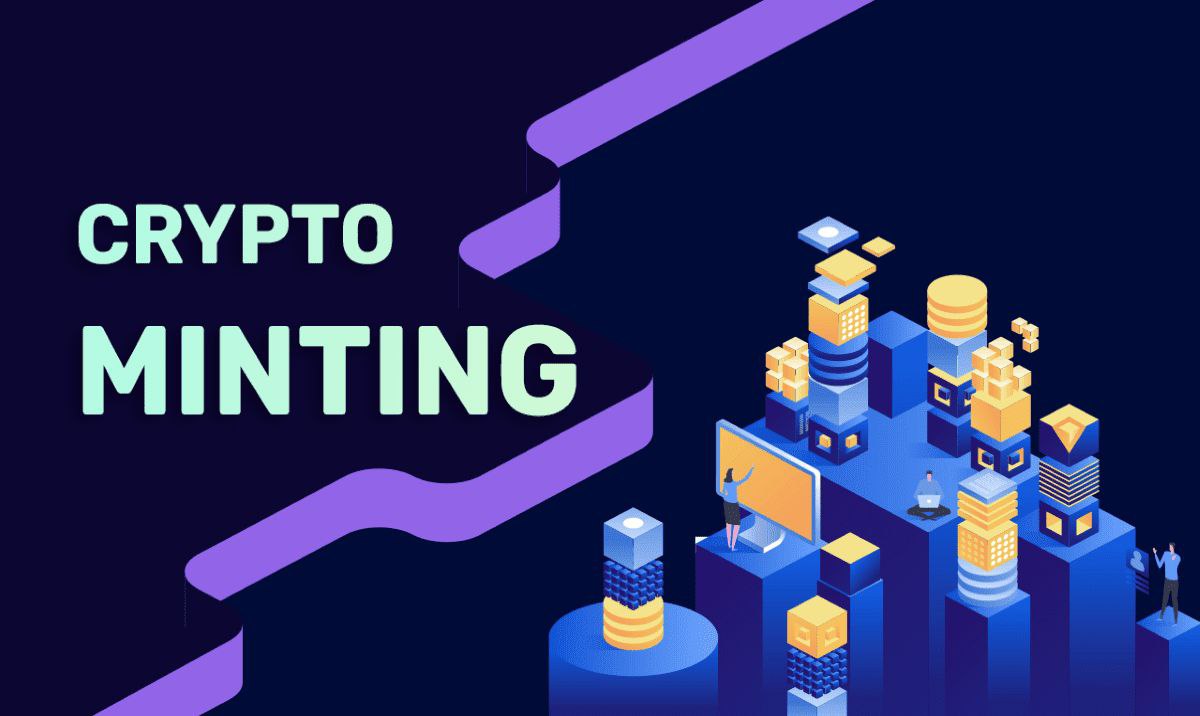Cryptocurrencies have gained immense popularity in recent years, and their underlying technology, blockchain, has revolutionized various industries. One crucial aspect of cryptocurrencies is minting, which plays a pivotal role in the creation of new coins or tokens. In this article, we will delve into the concept of minting in cryptocurrency, its mechanism, and its significance in the crypto ecosystem.
Introduction to Minting in Cryptocurrency :
Minting refers to the process of creating new coins or tokens in a cryptocurrency network. Unlike traditional currencies that are minted by central banks, cryptocurrencies rely on a decentralized approach where new coins or tokens are generated through various mechanisms built into the blockchain protocol. Minting serves as a way to reward network participants and maintain the integrity of the cryptocurrency network.

Mechanism of Minting in Cryptocurrency :
The mechanism of minting in cryptocurrency can vary depending on the type of consensus algorithm used by the blockchain network. Let's explore some of the common mechanisms of minting in popular cryptocurrencies:
● Proof of Work (PoW) :
PoW is a consensus algorithm used by cryptocurrencies like Bitcoin and Ethereum, where miners compete to solve complex mathematical puzzles to validate transactions and create new coins. When a miner successfully mines a block, they are rewarded with newly minted coins as an incentive for their computational efforts.
● Proof of Stake (PoS) :
PoS is another consensus algorithm used by cryptocurrencies like Cardano and Tezos, where validators are chosen to create new blocks based on the amount of coins they hold and "stake" in the network. Validators are rewarded with newly minted coins in proportion to their stake, encouraging them to act in the best interest of the network.
● Delegated Proof of Stake (DPoS) :
DPoS is a variant of PoS used by cryptocurrencies like EOS and Tron, where a limited number of validators or "delegates" are elected by coin holders to validate transactions and create new blocks. Delegates are rewarded with newly minted coins, and coin holders can vote to replace delegates who do not perform their duties satisfactorily.
● Masternodes :
Some cryptocurrencies like Dash and PIVX use a system of masternodes, which are dedicated nodes that provide additional services to the network, such as transaction privacy and instant transactions. Masternode operators are required to hold a certain amount of coins as collateral, and they are rewarded with newly minted coins for their services.
Significance of Minting in Cryptocurrency :
Minting plays a crucial role in the crypto ecosystem for several reasons:
● Incentivizing Network Participation :
Minting serves as a way to incentivize network participants, such as miners, validators, and masternode operators, to actively participate in the network and contribute to its security and stability. The reward of newly minted coins motivates these participants to invest resources in maintaining the network and validating transactions, ensuring its smooth operation.
● Controlling Inflation :
Minting allows cryptocurrency networks to control the inflation rate by regulating the creation of new coins or tokens. Most cryptocurrencies have a predetermined inflation schedule that reduces the rate of minting over time, ensuring that the supply of coins remains limited and preventing excessive inflation.
● Distribution of Coins :
Minting helps distribute newly created coins or tokens to different participants in the network. This can be used as a mechanism to distribute coins to early adopters, developers, or other stakeholders, ensuring a fair distribution of wealth and power within the crypto ecosystem.
● Consensus Building :
The process of minting and the associated rewards can also help build consensus among network participants. By providing an incentive for participants to agree on the validity of transactions and create new blocks, minting promotes consensus and helps maintain the integrity and security of blockchain network.
